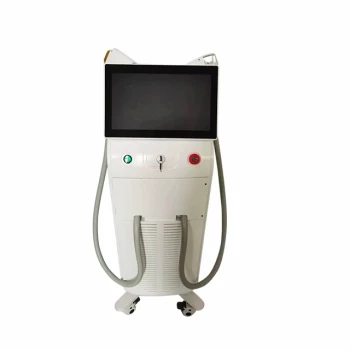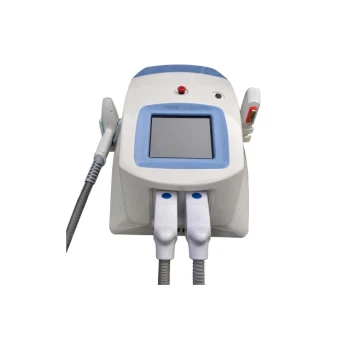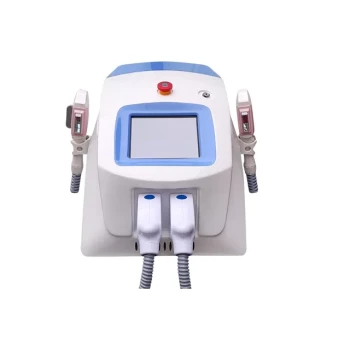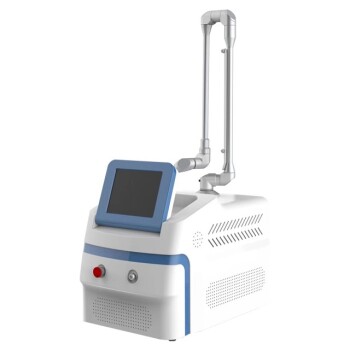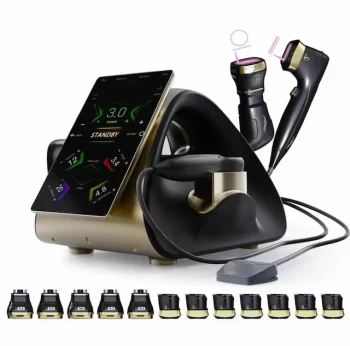In short, the primary goal of effective laser hair removal is to destroy the hair follicle's stem cells. The success of the treatment hinges entirely on whether the laser's thermal energy can permanently damage these specific cells, which are responsible for all future hair growth. While this is the intended outcome, achieving complete destruction is complex, which is why results can vary and multiple sessions are always necessary.
Laser hair removal doesn't just singe the hair you can see. Its true objective is to deliver targeted heat to the follicle's stem cells, disabling their ability to regenerate new hair. The treatment's long-term success is a direct measure of how effectively these critical regenerative cells are destroyed.

How Laser Hair Removal Actually Works
To understand the role of stem cells, we first need to look at the core mechanism of the treatment itself. It's a highly targeted process designed to disable the hair's growth engine at its source.
The Principle of Selective Photothermolysis
Laser hair removal operates on a principle called selective photothermolysis. In simple terms, this means using a specific wavelength of light (photo) to heat (thermo) and destroy (lysis) a chosen target without harming surrounding tissue.
In this case, the target is the melanin (pigment) concentrated within the hair follicle.
The Target: More Than Just the Hair Shaft
The laser energy is absorbed by the melanin in the hair shaft, but the shaft is just a conduit. The heat travels down the hair to damage the critical structures within the follicle responsible for growth.
The two primary targets are the dermal papilla, which nourishes the hair, and the bulge, a niche along the follicle that houses the hair follicle stem cells.
The Critical Role of Hair Follicle Stem Cells
Hair follicle stem cells (HFSCs) are the fundamental engine of hair regrowth. After a hair sheds, these stem cells activate to construct a new follicle and produce a new hair.
Destroying these stem cells is the only way to achieve a permanent reduction in hair. If the stem cells in the bulge are only damaged, they can eventually repair themselves and resume hair production.
Why the Anagen (Growth) Phase is Crucial
This entire process is only effective when the hair is in the anagen, or active growth phase.
During this phase, the hair shaft is physically connected to the dermal papilla, and melanin is abundant. This creates a perfect bridge for the laser's thermal energy to travel down and destroy the papilla and the nearby stem cells in the bulge. Hairs in other phases (resting or shedding) are not suitable targets.
Understanding the Trade-offs and Potential Failures
The statement that lasers "rarely destroy the stem cell" points to a critical truth: achieving this goal is not guaranteed with every pulse of the laser. Several factors can lead to an ineffective treatment where stem cells are spared.
Insufficient Heat Delivery
If the laser's energy setting is too low or its pulse duration is incorrect for your hair thickness and color, the heat generated may be insufficient to cause irreversible damage to the stem cells. The hair might shed, but the follicle's regenerative capacity remains intact.
Follicles in the Wrong Growth Stage
During any single laser session, only a fraction of your hair follicles (typically 10-20%) are in the ideal anagen phase. Follicles in the resting or shedding phases do not have enough pigment or a solid connection to the papilla, so the laser energy does not reach or destroy the stem cells effectively. This is the fundamental reason multiple sessions are required.
Mismatch of Laser and Skin Type
As the reference notes, older lasers like the Ruby are less suitable for darker skin. This is because the laser cannot easily distinguish between the melanin in the hair and the melanin in the skin, increasing the risk of burns.
Modern lasers (like the Nd:YAG) use longer wavelengths that penetrate deeper and are safer for darker skin, improving the odds of targeting the follicle while protecting the epidermis.
Why It's Called "Permanent Hair Reduction"
The FDA has cleared laser hair removal for "permanent hair reduction," not "permanent hair removal." This is a crucial distinction.
The goal is to destroy a significant percentage of the stem cell populations in a given area. A successful treatment course results in a lasting and dramatic decrease in the number of hairs, but it rarely achieves 100% elimination forever.
Making the Right Choice for Your Goal
Understanding the science behind stem cell destruction allows you to set realistic expectations and ensure you're getting the most effective treatment possible.
- If your primary focus is maximum long-term effectiveness: Choose a reputable provider who uses modern, medical-grade lasers and can explain how they will tailor the treatment to your specific skin and hair type.
- If you have darker skin and are concerned about safety: Confirm the clinic uses a laser with a longer wavelength, such as an Nd:YAG, which is specifically designed to bypass pigment in the skin's surface.
- If you want to manage your expectations: Understand that the goal is a significant, lasting reduction in hair, not total eradication, and commit to completing the full series of treatments to target hairs in every growth cycle.
Ultimately, a successful laser hair removal outcome is defined by its ability to permanently disable the hair follicle's regenerative engine—the stem cells.
Summary Table:
| Key Factor | Impact on Stem Cell Destruction |
|---|---|
| Laser Energy | Sufficient heat is needed to permanently destroy stem cells. |
| Hair Growth Phase | Only effective during the active growth (anagen) phase. |
| Laser & Skin Type Match | Correct wavelength is crucial for safety and effectiveness. |
| Number of Sessions | Multiple sessions are required to target all follicles over time. |
Achieve lasting, professional results for your clients.
BELIS specializes in professional medical aesthetic equipment, providing advanced laser systems trusted by medical aesthetics clinics and premium beauty salons. Our technology is engineered to effectively target hair follicle stem cells, ensuring safe and superior outcomes for a wide range of skin and hair types.
Elevate your treatment offerings and client satisfaction. Contact our experts today to find the perfect laser solution for your practice.
Visual Guide
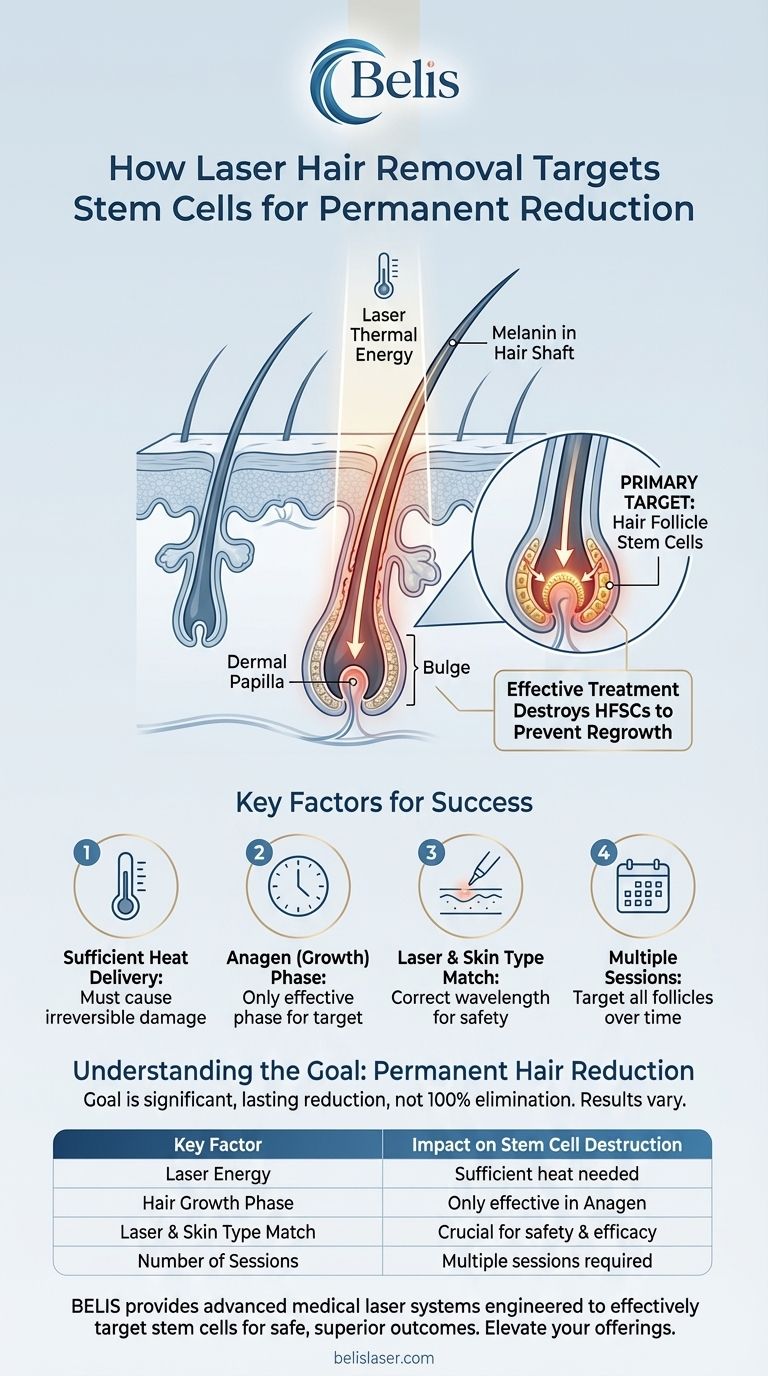
Related Products
- Trilaser Diode Hair Removal Machine for Beauty Clinic Use
- Diode Tri Laser Hair Removal Machine for Clinic Use
- Diode Laser SHR Trilaser Hair Removal Machine for Clinic Use
- Clinic Diode Laser Hair Removal Machine with SHR and Trilaser Technology
- Clinic Use IPL and SHR Hair Removal Machine with Nd Yag Laser Tattoo Removal
People Also Ask
- Who is not suitable for laser hair removal? A Safety Guide to Assess Your Candidacy
- How can I maximize my laser hair removal results? A Guide to Optimal Treatment and Safety
- Can you use laser hair removal on intimate areas? Achieve Lasting Smoothness and Comfort
- How to get the most out of laser? Maximize Your Hair Removal Results Safely
- Is it safe to do laser every 2 weeks? The Critical Timing for Safe & Effective Results

